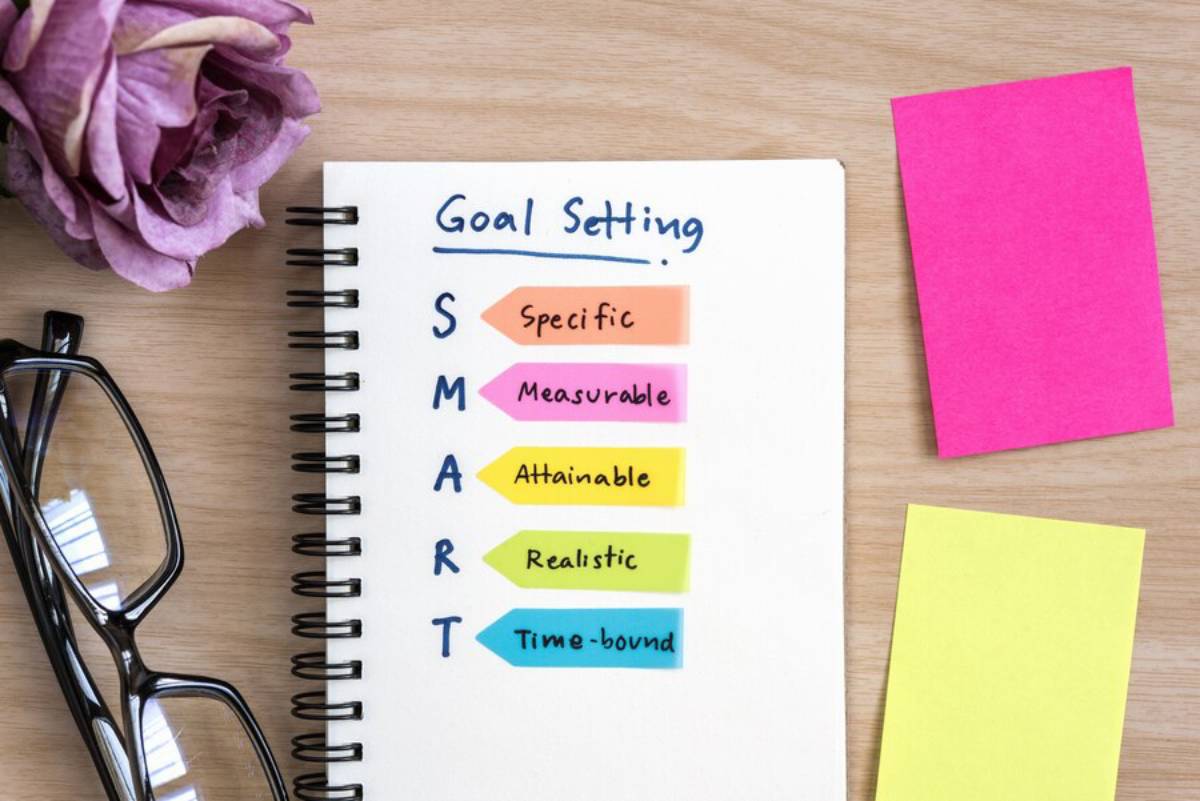
How to Set SMART Goals for Personal and Professional Growth
Goal setting is essential for growth—but vague ambitions rarely lead to results.
Our team found that people who use the SMART framework to plan their goals are more likely to succeed. Why? Because SMART goals turn abstract dreams into clear, achievable action steps. Whether you’re working on career advancement or personal development, this system gives your goals structure, direction, and purpose.
When goals are Specific, Measurable, Achievable, Relevant, and Time-bound, you create a roadmap you can follow with confidence. Instead of relying on motivation alone, SMART goals empower you with clarity and focus.
From building new habits to completing major projects, this method allows you to track progress, adapt to challenges, and celebrate milestones along the way. It’s practical, proven, and powerful.
Pro Tip: Write your SMART goals down and review them weekly—it keeps you accountable and motivated.
Quick Guide: How to Set SMART Goals
- Specific: Define exactly what you want to achieve.
- Measurable: Set criteria to track your progress.
- Achievable: Make sure your goal is realistic given your resources.
- Relevant: Align your goal with your broader ambitions.
- Time-bound: Attach a clear deadline to create urgency.
Important: Avoid vague goals like “get better at work” or “be healthier.” Instead, reframe them as “Complete a professional certification course by September” or “Exercise three times a week for 30 minutes.”
Why SMART Goal Setting Works
Many goals fail because they’re too broad or lack direction. “I want to be more successful” or “I should start saving money” are common ambitions—but without a plan, they fizzle out.
SMART goals solve that problem. They break down large ambitions into focused, actionable steps. This makes the path forward clearer—and helps you measure how far you’ve come.
Whether you’re looking to grow personally or professionally, setting SMART goals keeps you grounded in reality while aiming for progress. It encourages momentum without the overwhelm.
Steps to Set SMART Goals That Stick
1. Start with a Clear Vision

What do you truly want to achieve? Think about where you want to be in the next 3 months, 6 months, or year. Ask yourself:
- What personal habits do I want to build or break?
- What skills do I want to develop in my career?
- What changes would improve my daily life?
Jot these ideas down. These will serve as the starting points for your SMART goals.
2. Make the Goal Specific
A specific goal answers the who, what, when, where, and why. It leaves no room for ambiguity.
“Start a morning workout routine” is clearer than “Get fit.”
“Finish writing a 5,000-word blog series by June 30” beats “Work on my writing.”
The more precise your goal, the easier it is to plan and act on.
3. Ensure It’s Measurable
What does success look like? Set quantifiable benchmarks so you know when you’ve reached the goal—or how far you have to go.
Examples:
- “Save £1,000 in three months.”
- “Apply to five new jobs each week.”
- “Read 12 books this year.”
Measurable goals help you stay motivated because you can see real progress.
4. Check That It’s Achievable
Ambition is great—but your goal also needs to be realistic. Setting unachievable goals leads to frustration and burnout.
Instead, break larger goals into smaller milestones. For example:
- If your dream is to launch a business, start with “Research and register a domain name by the end of the month.”
- If you want to run a marathon, begin with “Run three times a week for 20 minutes for the next month.”
Smaller, achievable steps build confidence and keep you moving forward.
5. Make Sure It’s Relevant
Your goal should matter to you. Ask yourself:
- Does this goal align with my long-term plans?
- Is it meaningful or just something I think I should do?
- Will achieving this make a positive impact in my life?
Relevant goals inspire deeper commitment because they connect with your values and vision.
6. Set a Deadline

Without a time frame, even the best goal can drag on forever. Adding a deadline creates urgency and helps you prioritise.
Try framing your goal like this:
- “By August 31, I will…”
- “In the next 90 days, I will…”
- “Each week for the next month, I will…”
Time-bound goals provide a natural endpoint for review, adjustment, or celebration.
Best Practices for SMART Goal Success
Setting the goal is only the beginning. Use these habits to follow through effectively:
- Write your goals down: Visible goals are more likely to be achieved.
- Break goals into weekly or daily tasks: Consistent small actions lead to big results.
- Review progress weekly: Reflect on wins, roadblocks, and next steps.
- Celebrate milestones: Acknowledge your efforts and reward yourself.
- Adjust when needed: Life happens—flexibility keeps you going, even when plans shift.
By combining SMART goals with consistent habits, you create a powerful engine for personal and professional development.
Popular Tools for SMART Goal Tracking
These tools can help you organise, track, and stay on top of your goals:
- Trello: Break your goals into tasks with boards and checklists.
- Notion: Build a custom goal dashboard with timelines and reflections.
- Google Sheets: Use templates to track measurable progress over time.
- Coach.me: A habit-tracking app with coaching support.
- Evernote: Keep goal notes, research, and updates in one place.
Choose a system that fits your workflow—tech-savvy or low-tech, consistency is what counts.
Warning: Don’t set too many goals at once. Focus on 2–3 meaningful goals at a time so you don’t spread yourself too thin. It’s better to do a few things well than attempt too much and give up.
Frequently Asked Questions About SMART Goal Setting
1. What does SMART actually stand for?
SMART stands for Specific, Measurable, Achievable, Relevant, and Time-bound—a framework for creating clear and actionable goals.
2. Can I use SMART goals for my personal life as well as work?
Yes—SMART goals are effective in any area of life, from fitness and finances to relationships and learning.
3. How many SMART goals should I set at once?
Focus on 2–3 at a time. Once you make progress or complete them, you can set new ones.
4. What if I miss my deadline?
Missing a deadline isn’t failure—it’s feedback. Review what went wrong, adjust your approach, and set a new timeline. The goal is progress, not perfection.
5. How often should I review my goals?
Weekly check-ins work best. They help you stay focused, make timely adjustments, and build momentum.
Turn Your Goals Into Growth
Setting SMART goals is more than just planning—it’s a decision to grow. With this clear framework, you can turn your ambitions into concrete steps and track meaningful progress over time.
Whether you want to advance in your career, build healthier habits, or pursue a new passion, SMART goals help you stay grounded, focused, and motivated.
Remember, success doesn’t come from lofty dreams alone. It comes from clear direction, consistent action, and the willingness to learn as you go.
So take that vision, give it structure, and get started—your growth journey begins with one SMART step.